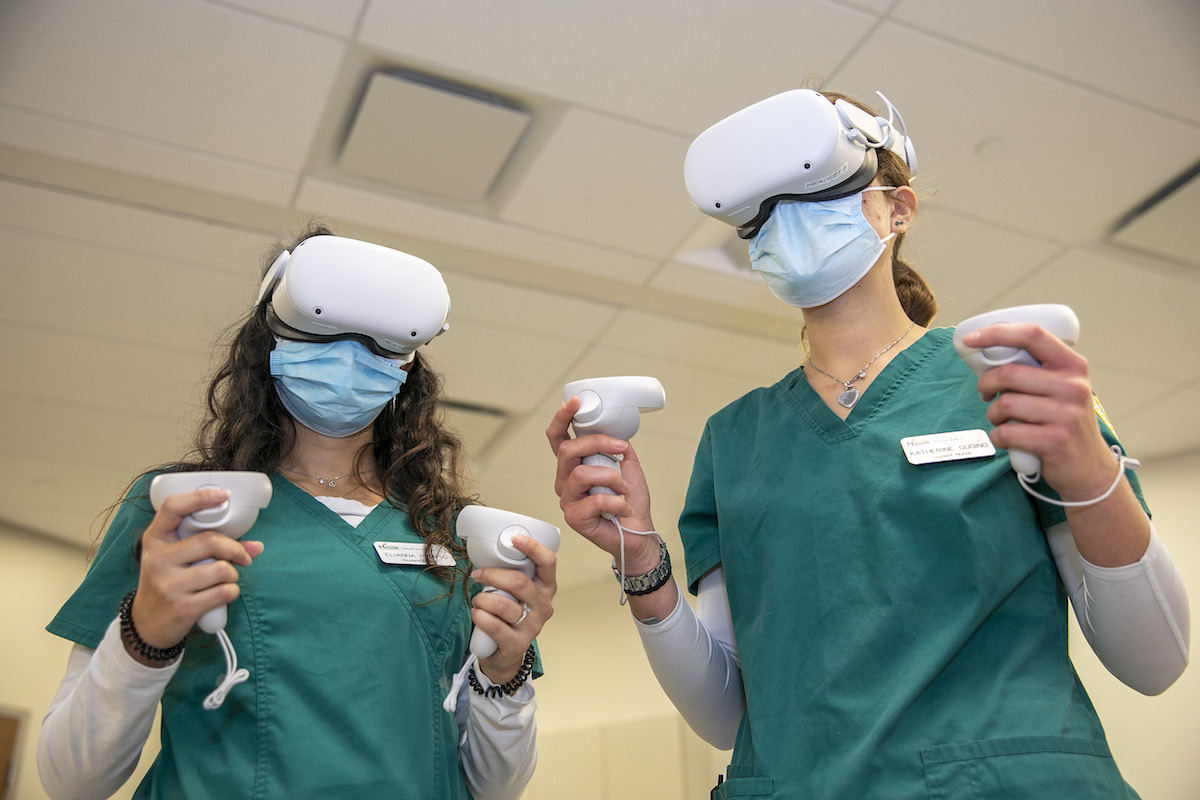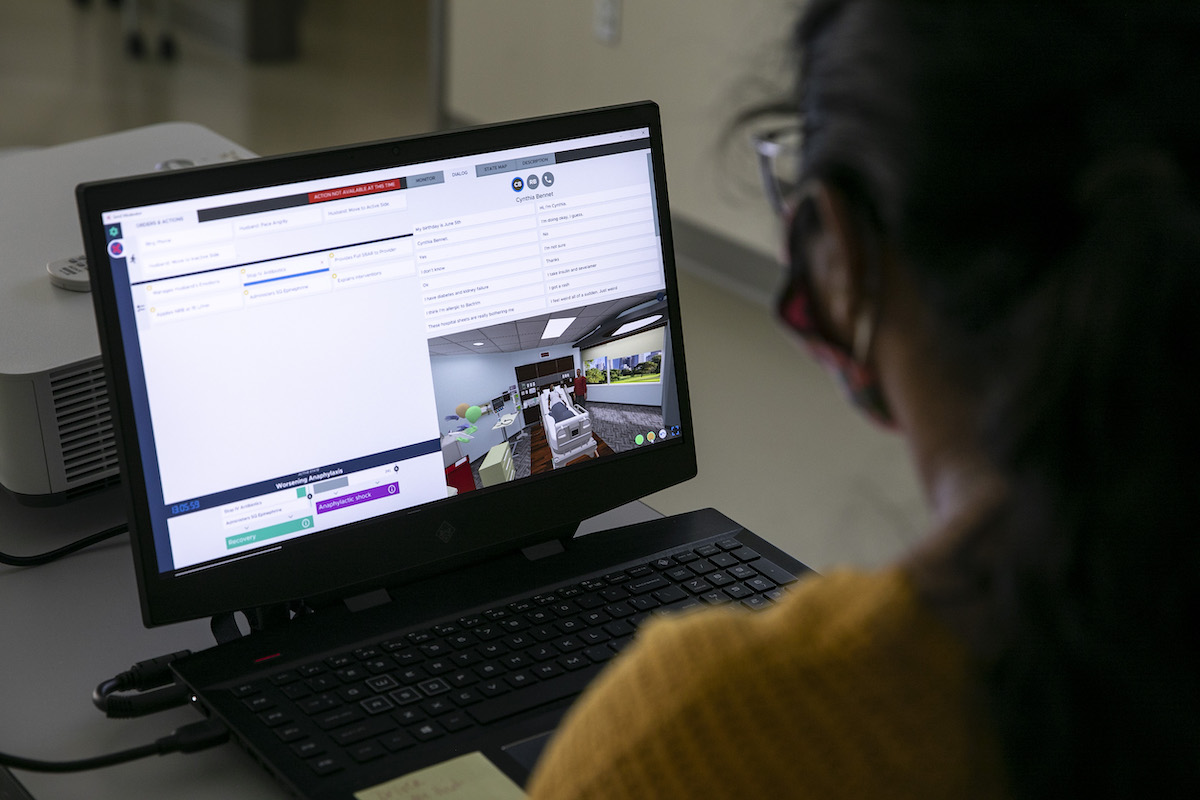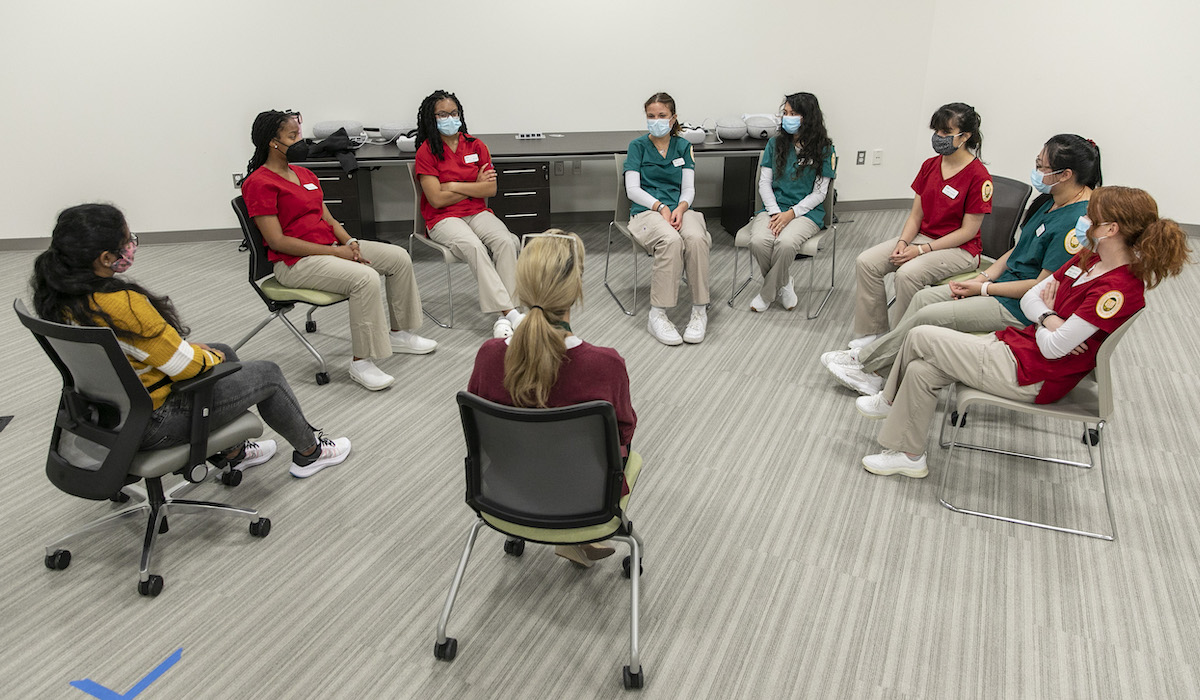The lab space opened in Fall 2021 and will be available for students across all health disciplines, such as social work, community health, and nutrition.

Experience. Learning. Confidence. Autonomy. Scope of practice. These are a few takeaways that Bethany Cieslowski hopes students will gain from their use of George Mason University’s new Virtual Reality (VR) Simulation Lab space in the Peterson Hall on the Fairfax Campus.
“VR provides many opportunities for patient care in an incredibly realistic, immersive environment,” said Cieslowski, associate professor of nursing and simulation coordinator in the College of Health and Human Services. “Students have the autonomy to treat and care for the patient as if they were the nurse, not student nurse—something that cannot be done in the real patient setting.”
The Simulation Team trained and tested the VR lab last fall, and deployed VR with 110 students enrolled in NURS 455 Advanced Technologies in Nursing. More than 50 nursing students a week participated in the VR lab experience and were presented with various patient scenarios that included medical history and an emerging medical issue.
Graduate teaching assistant Sindhu Mallala said once students put on their headset, they log into the SIM X application, which is used for their VR-based simulations, and enter a replica of a hospital lobby.
“The scenario usually takes place in a hospital room with patients, a handoff nurse, and a relative,” said Mallala, a former general physician in India who is majoring in health informatics. “The students enter as the nurses on shift and are assigned to that patient. The whole scenario is supposed to be a virtual replica of a real-life case management scenario that takes place.”
Mallala said the VR simulation lab is a safe environment for students to learn and develop a plan to treat their patients. “It’s a great exercise to improve critical thinking, a must-have quality in medical field.”

“My biggest takeaway from the virtual simulation training was that medical mistakes happen,” said Katie Gugino, a senior in the bachelor of science in nursing (BSN) traditional program with a concentration in health promotion. “As health care professionals, we need to double-check steps to prevent them and then be prepared to act when they do happen.”
“It is important that we keep our patients safe and do our best to prevent medical errors and fix them as they arise,” Gugino said.
Cieslowski said the patient responds to the student’s actions, performance, and communication. A debrief immediately following the VR case helps educators understand and evaluate the critical thinking processes that drove students’ actions, performance, and outcomes.
“I think it's beneficial to have these simulation drills to really help us gain the muscle memory and critical thinking skills for how best to respond to emergency situations,” said Elianna Puerto, a senior in the traditional BSN program.
Puerto said she appreciated being able to ask the virtual patient questions.
“I try to stay with yes or no questions, which in a way is helpful for me to sort of triage the patient,” said Puerto. “For instance, I can ask the patient ‘Do you feel itchy? Is it getting harder for you to breathe?’ And the patient can say yes or no.”
Cieslowski said the virtual simulation lab prepares students for a career in the nursing and health care fields by providing another modality and opportunity for interprofessional education—the ability to learn about, with and from other disciplines.
“What I appreciate most about Dr. Cieslowski’s teaching style is that she allows us to discuss how we feel after lab and simulations and how she can improve the lab experience to make it more memorable,” said senior nursing major MaKayla Fortune.

Senior nursing student Catherine Robinson appreciates the interactivity. “In simulations in the past, we just click and look at a computer screen, which I don’t find helpful because I am more of a hands-on learner,” said Robinson.
This spring semester, Cieslowski said the lab will be used to augment and enhance pediatric clinical hours for 108 junior-level nursing students to help alleviate the shortage of pediatric clinical sites available in the community.
Future applications of the VR simulation could include social work cases and interprofessional education experiences, Cieslowski added.
